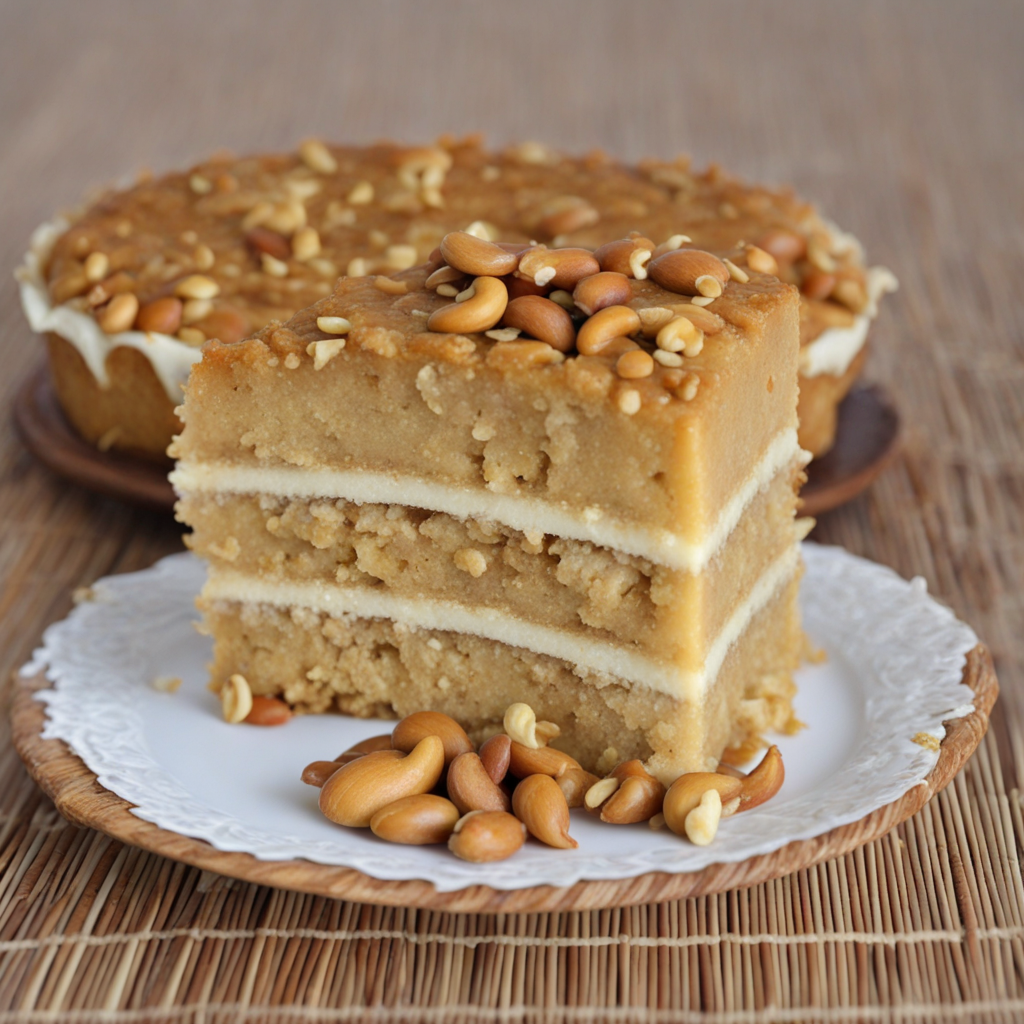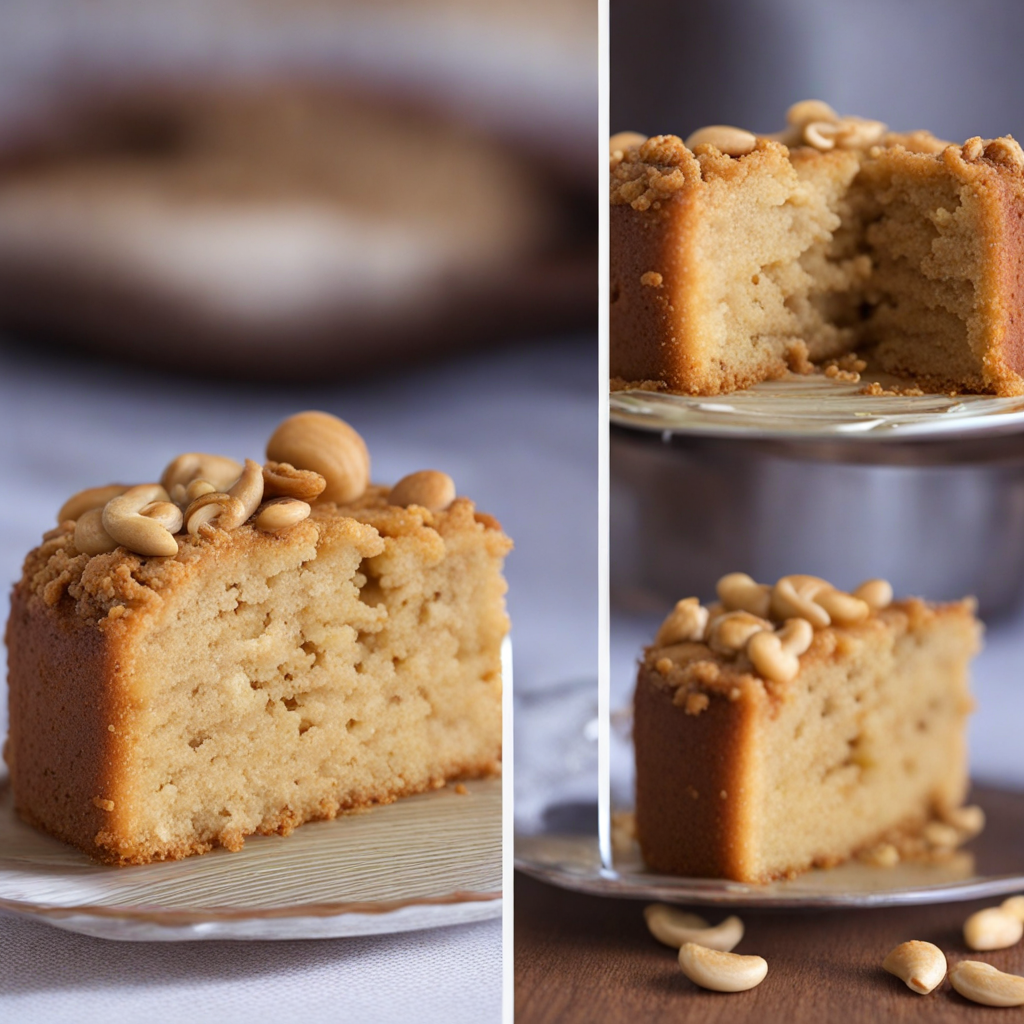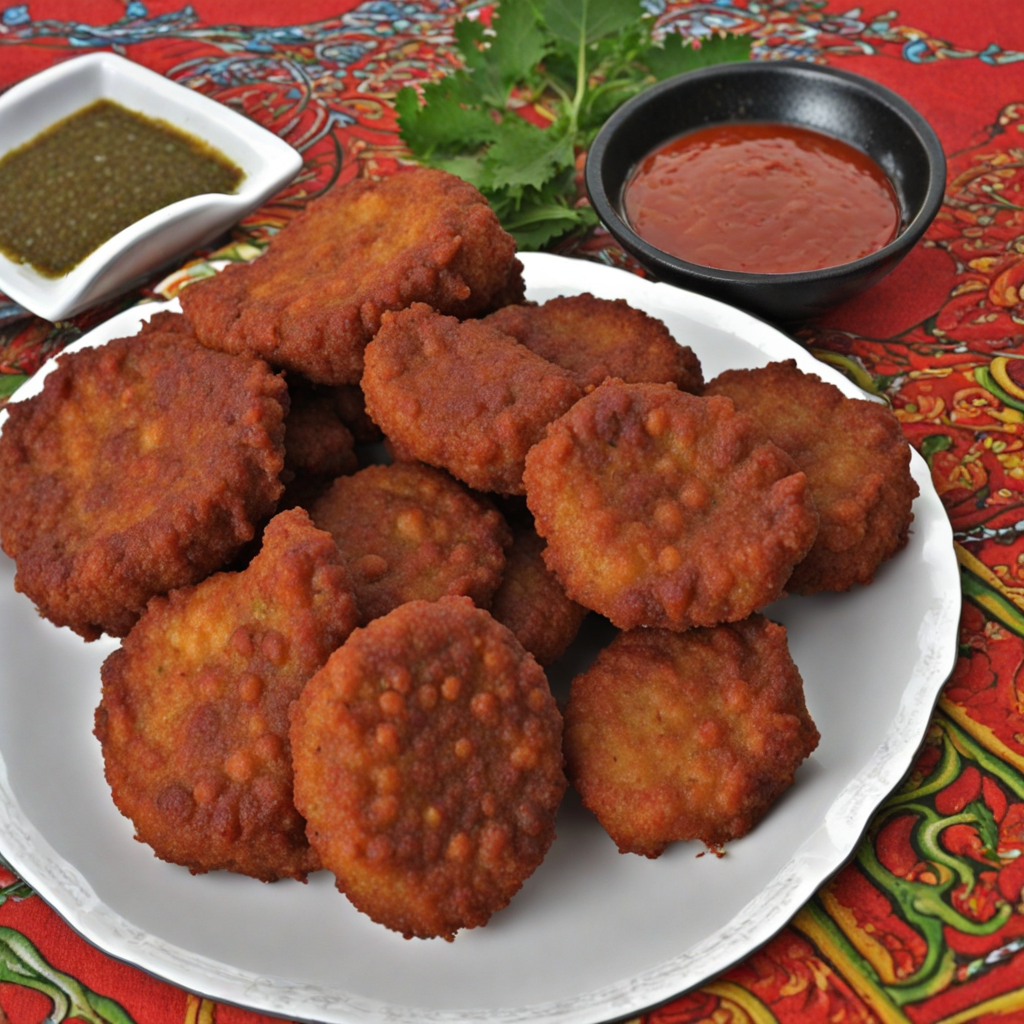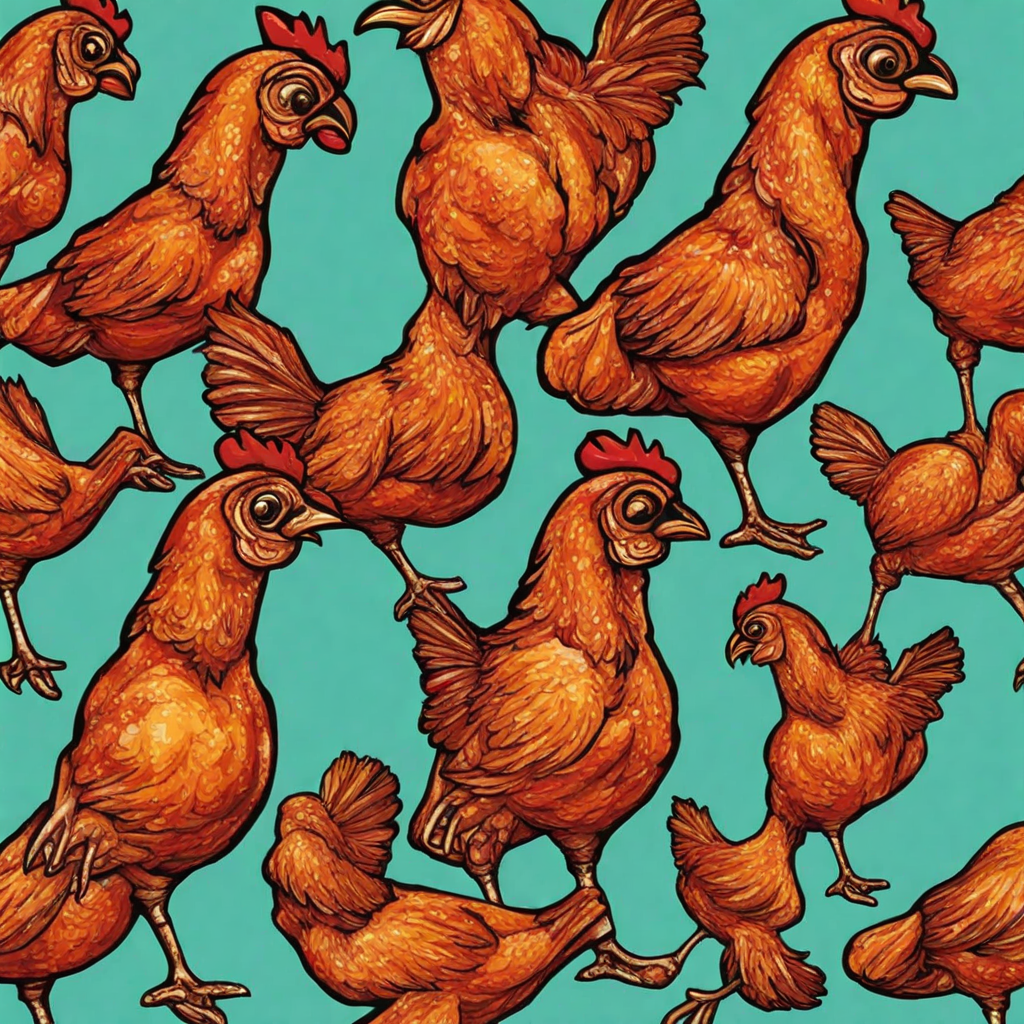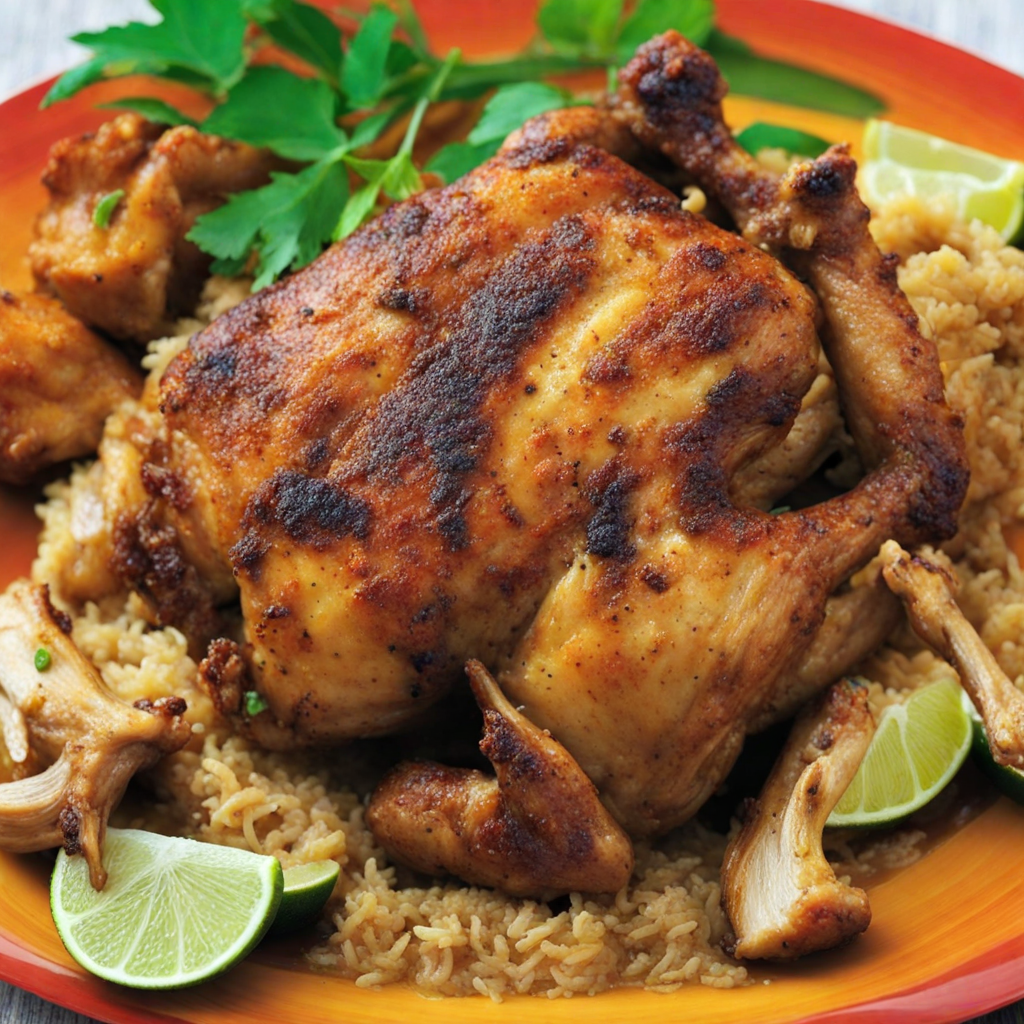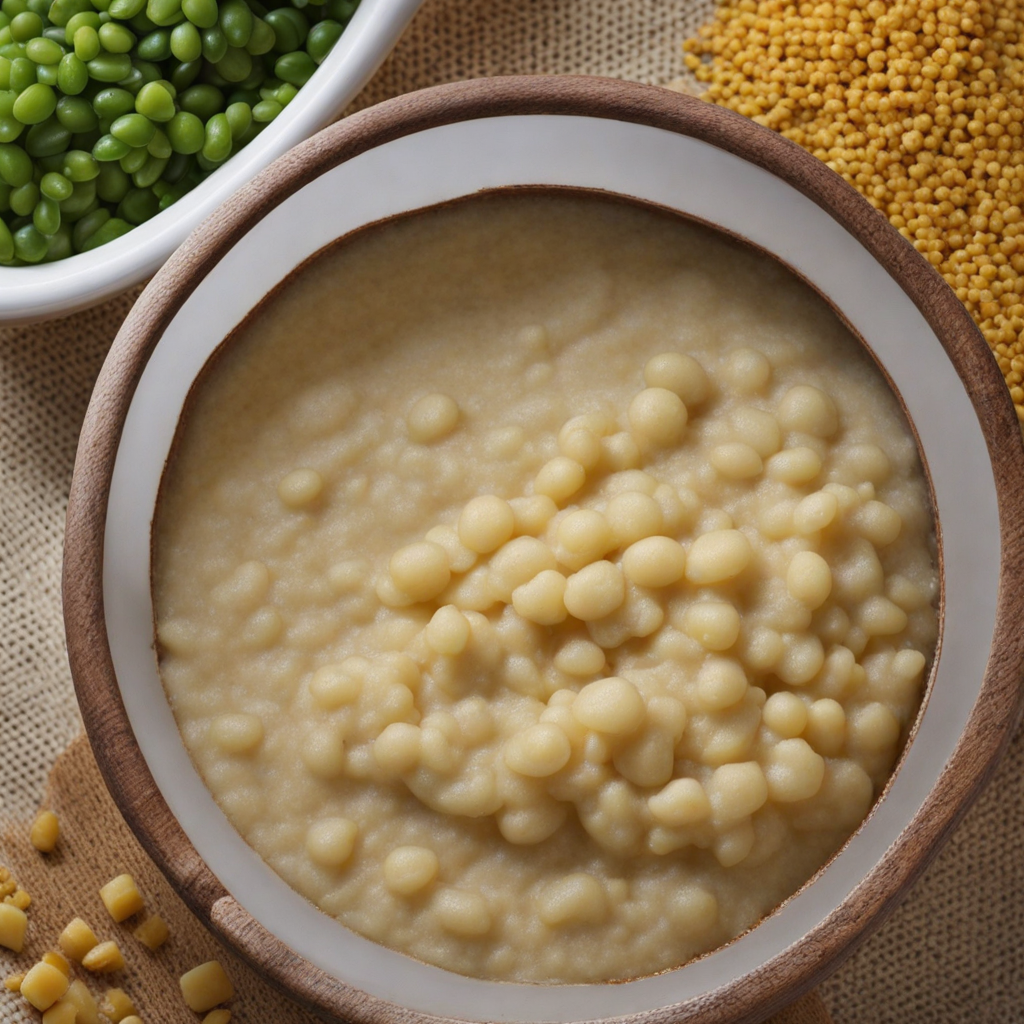Cashew Nut Cake
Cashew Nut Cake is a delightful dessert that showcases the rich flavors and textures of Mozambique's culinary heritage. This cake is made with finely ground cashew nuts, which lend a buttery, nutty flavor that is both unique and indulgent. The cake's moist crumb is often enhanced with the addition of eggs, sugar, and a hint of vanilla, creating a harmonious balance of sweetness and nutty richness. The use of cashews not only adds depth to the flavor profile but also brings a delightful crunch to each bite, making it a satisfying treat for nut lovers. The preparation of Cashew Nut Cake often involves toasting the cashews to deepen their flavor, allowing the natural oils to release and infuse the cake with a warm, roasted aroma. Some variations include the incorporation of coconut or spices like cinnamon or nutmeg, which add an exotic twist and highlight the tropical essence of Mozambique. The cake is typically baked until golden brown and can be served plain or with a dusting of powdered sugar, while some may choose to pair it with a rich chocolate glaze or a dollop of whipped cream for an extra touch of decadence. Enjoying a slice of Cashew Nut Cake is not just about savoring its taste; it’s an experience that transports you to the vibrant landscapes of Mozambique. The cake can be enjoyed as a special dessert during celebrations or as a delightful accompaniment to afternoon tea. Its unique flavor and texture make it a standout treat that invites you to explore the culinary treasures of this beautiful African nation, offering a delicious glimpse into its rich cultural tapestry.
How It Became This Dish
The History of Bolo de Caju: Mozambique's Cashew Cake #### Origins Bolo de Caju, or cashew cake, is a traditional dessert from Mozambique that embodies the rich culinary heritage of the country. Mozambique, located along the southeastern coast of Africa, has a diverse food culture influenced by its indigenous people, Portuguese colonization, and the flavors brought by various African communities and Asian traders. The cashew tree (Anacardium occidentale), native to Brazil, was introduced to Mozambique by Portuguese colonizers in the 16th century. This introduction was pivotal, as it not only altered the agricultural landscape but also laid the groundwork for what would eventually become one of Mozambique’s beloved desserts. The cashew nut, often celebrated for its versatility and nutritional value, is integral to many Mozambican recipes. The fruit of the cashew tree, known as the cashew apple, is juicy and sweet, but it is the nut that captures the attention of many. Over time, the nut and its accompanying fruit became staples in the local diet, inspiring the creation of Bolo de Caju as a way to celebrate the plentiful harvests of cashews. #### Cultural Significance Bolo de Caju is not merely a dessert; it is a symbol of community and celebration in Mozambique. Traditionally prepared during significant events such as weddings, birthdays, and religious festivals, the cake represents hospitality and generosity. Sharing food is a deeply ingrained cultural practice in Mozambique, and offering Bolo de Caju to guests signifies warmth and friendship. The cake is also tied to the notion of resilience. In a country that has faced numerous challenges, including colonial rule, civil war, and economic hardship, the preparation and consumption of traditional foods such as Bolo de Caju serve as a reminder of community strength and cultural identity. It is a way for families to connect with their heritage, passing down recipes through generations, ensuring that the essence of their culture remains alive. #### Ingredients and Preparation The ingredients used in Bolo de Caju are reflective of Mozambique’s agricultural produce, with the cashew nut as the star component. The cake typically includes ground cashews, sugar, eggs, and sometimes coconut or vanilla for added flavor. The preparation is relatively straightforward but requires a delicate touch to achieve the perfect texture. The ground cashews create a moist and dense cake that is often compared to almond cakes found in other cultures. Traditionally, Bolo de Caju is baked in a round cake pan and served plain or dusted with powdered sugar. Some variations include adding a layer of cashew cream or a drizzle of caramel sauce, making it even more indulgent. The simplicity of the ingredients allows the natural flavor of the cashew to shine through, making it a beloved treat among locals and visitors alike. #### Development Over Time As Mozambique has evolved through the ages, so too has Bolo de Caju. The cake has adapted to changing tastes and ingredient availability, reflecting broader culinary trends. In the post-colonial era, there has been a resurgence of interest in traditional foods, as many Mozambicans seek to reconnect with their roots and celebrate their culinary identity. This revival has led to a growing popularity of Bolo de Caju not only within the country but also on international platforms. The globalization of food culture has facilitated the spread of Bolo de Caju beyond Mozambique’s borders. As the diaspora has grown, so too has the appreciation for Mozambican cuisine around the world. Food festivals and cultural events often feature Bolo de Caju, allowing people from diverse backgrounds to experience its unique flavor and texture. This has encouraged culinary exchange, with chefs experimenting and creating fusion versions of the cake, often incorporating elements from other cuisines while maintaining the essence of the original recipe. In recent years, with the rise of social media and food blogging, Bolo de Caju has gained further visibility. Home cooks and professional chefs alike share their interpretations of the cake, showcasing its versatility and encouraging a new generation to engage with Mozambican culinary traditions. The cake is featured in cookbooks that celebrate African cuisine, serving as a bridge to introduce this delightful dessert to a global audience. #### Conclusion Bolo de Caju is more than just a delicious dessert; it is a testament to Mozambique's rich history and cultural heritage. From its origins with the introduction of the cashew tree by Portuguese colonizers to its role in contemporary celebrations, the cake has evolved while remaining a beloved staple of Mozambican cuisine. As it continues to gain recognition both locally and internationally, Bolo de Caju stands as a delicious reminder of the resilience, creativity, and warmth of the Mozambican people. In every slice of Bolo de Caju lies a story—a story of the land, the people, and the spirit of a nation that takes pride in its culinary treasures. Whether enjoyed at a family gathering, a community celebration, or shared among friends, Bolo de Caju invites all to partake in the rich tapestry of Mozambican culture, one delectable bite at a time.
You may like
Discover local flavors from Mozambique


